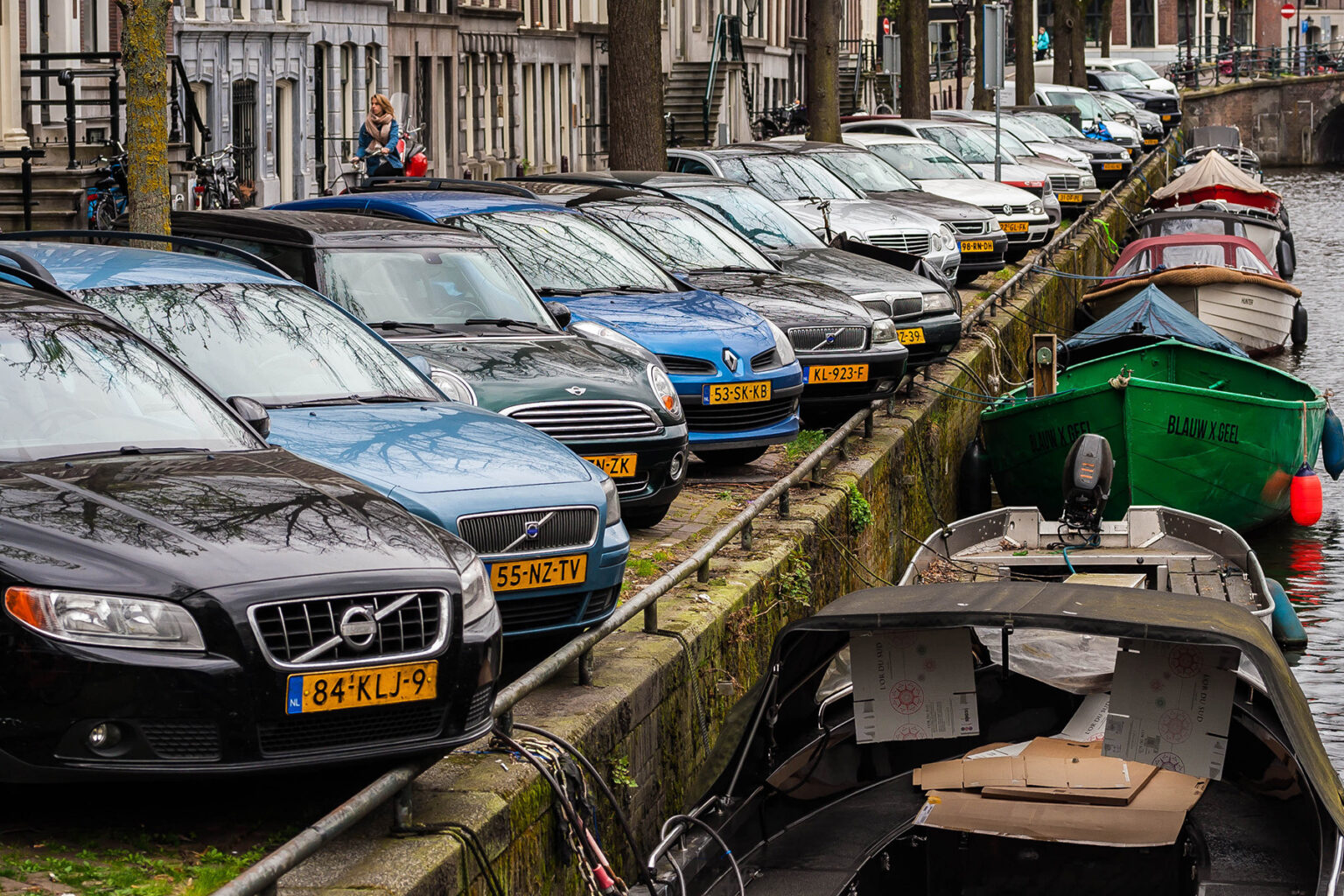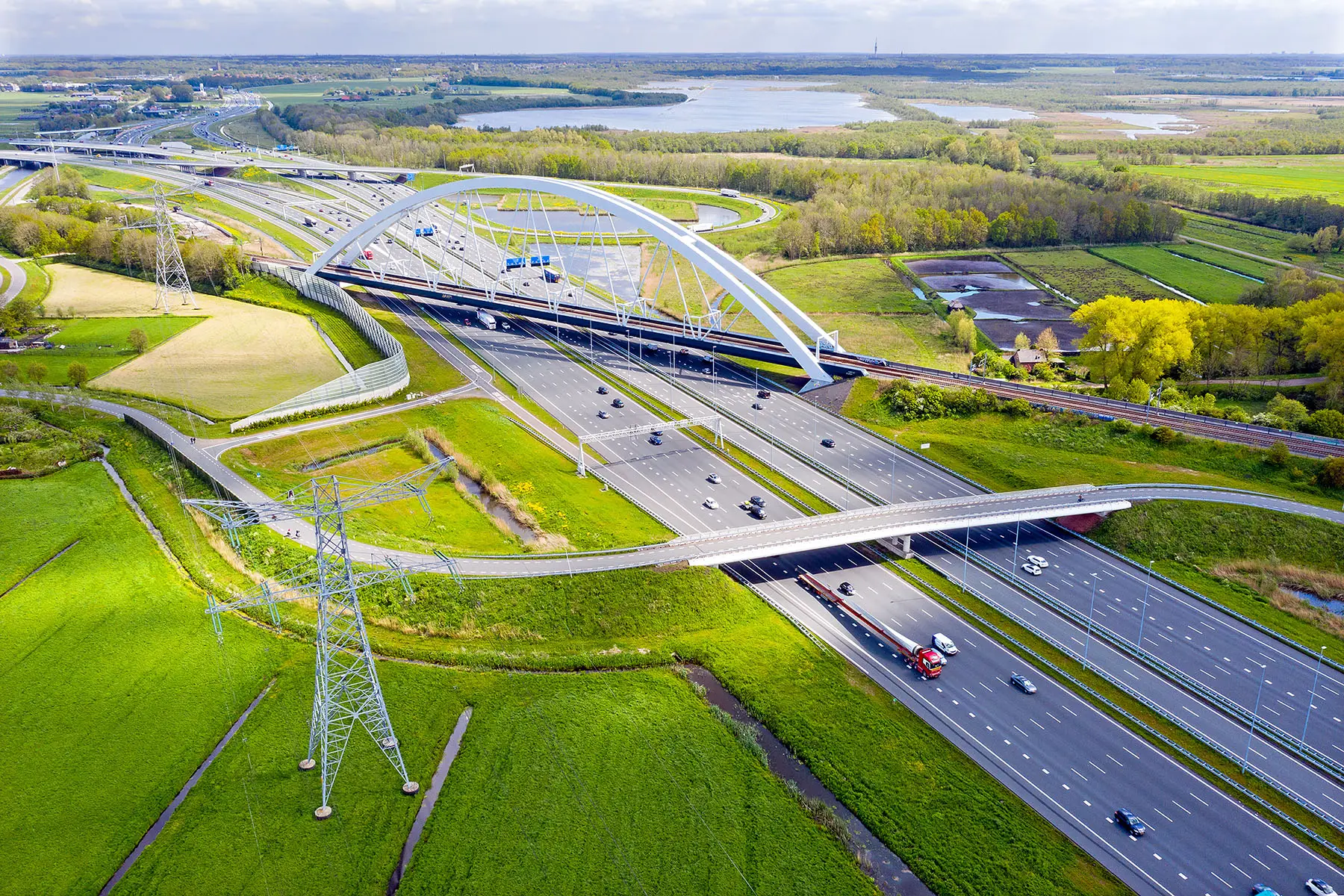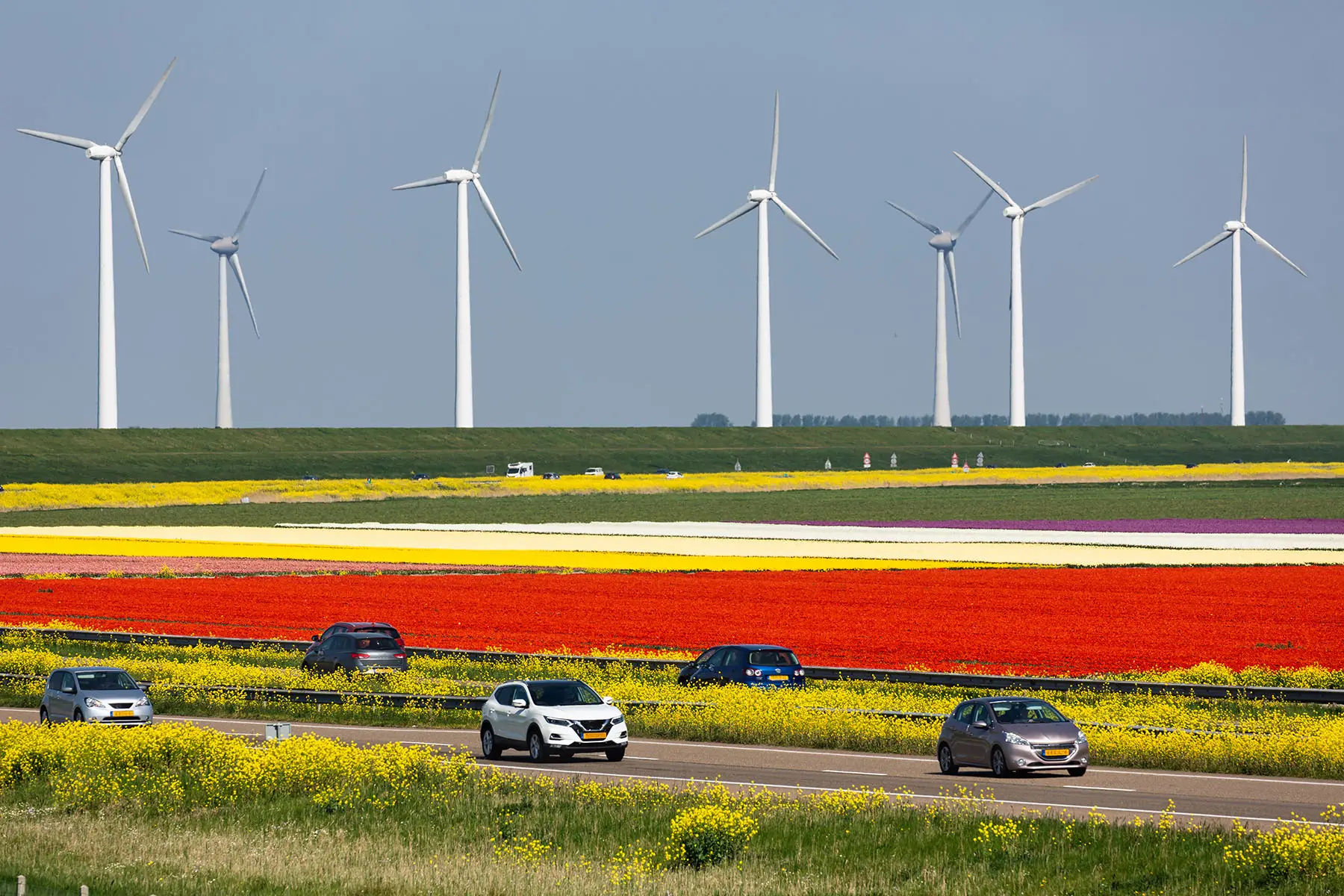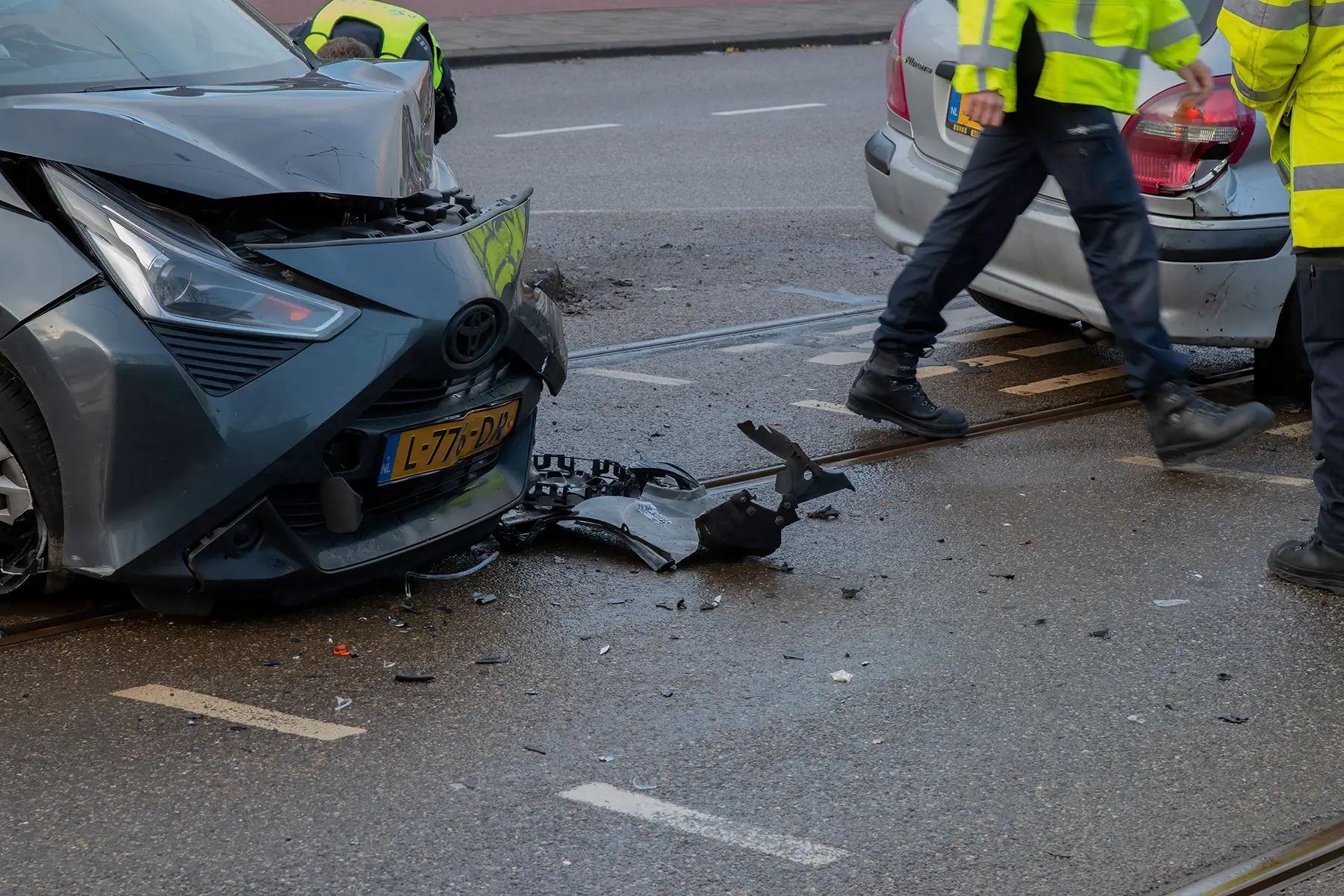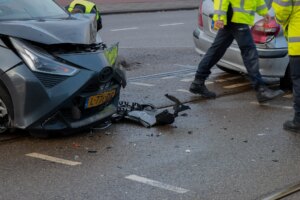Even though the Netherlands boasts high-quality public transport and world-renowned cycling infrastructure, many people still choose to buy a car. But while acquiring one may be a convenient option, there are several things to consider.
For instance, do you want a new model or a secondhand one? Or would you prefer to import your own car from abroad? Then, of course, there are additional costs to factor in when driving in the Netherlands, such as car insurance, road tax, and fuel.
To help you get up and driving, this article outlines everything you need to know about buying a car in the Netherlands, including:
- Buying a car in the Netherlands
- Buying a new car in the Netherlands
- Where to buy a new car in the Netherlands
- Electric cars and hybrids in the Netherlands
- Buying a used car in the Netherlands
- Where to buy a used car in the Netherlands
- Car registration and other paperwork
- Car costs in the Netherlands
- Importing a car in the Netherlands
- Selling a car in the Netherlands
- Useful resources
InShared
Looking for car insurance in the Netherlands? InShared has you covered. They provide affordable coverage for personal, home, and car insurance. That’s not all – Inshared customers get an annual reward, with left-over money returned to customers at the end of the year. Visit InShared for coverage with added benefits.
Buying a car in the Netherlands
The Netherlands may be known as a land of bicycles, but cars are not far behind. In fact, according to data from 2023, there are 8.9 million passenger cars on the road. This represents one for every 1.9 inhabitants. Figures also show that car ownership has been increasing since 2020, with a growth of around 100,000 per year. If this trend continues, there may be around 10 million cars on the road by the end of 2024.
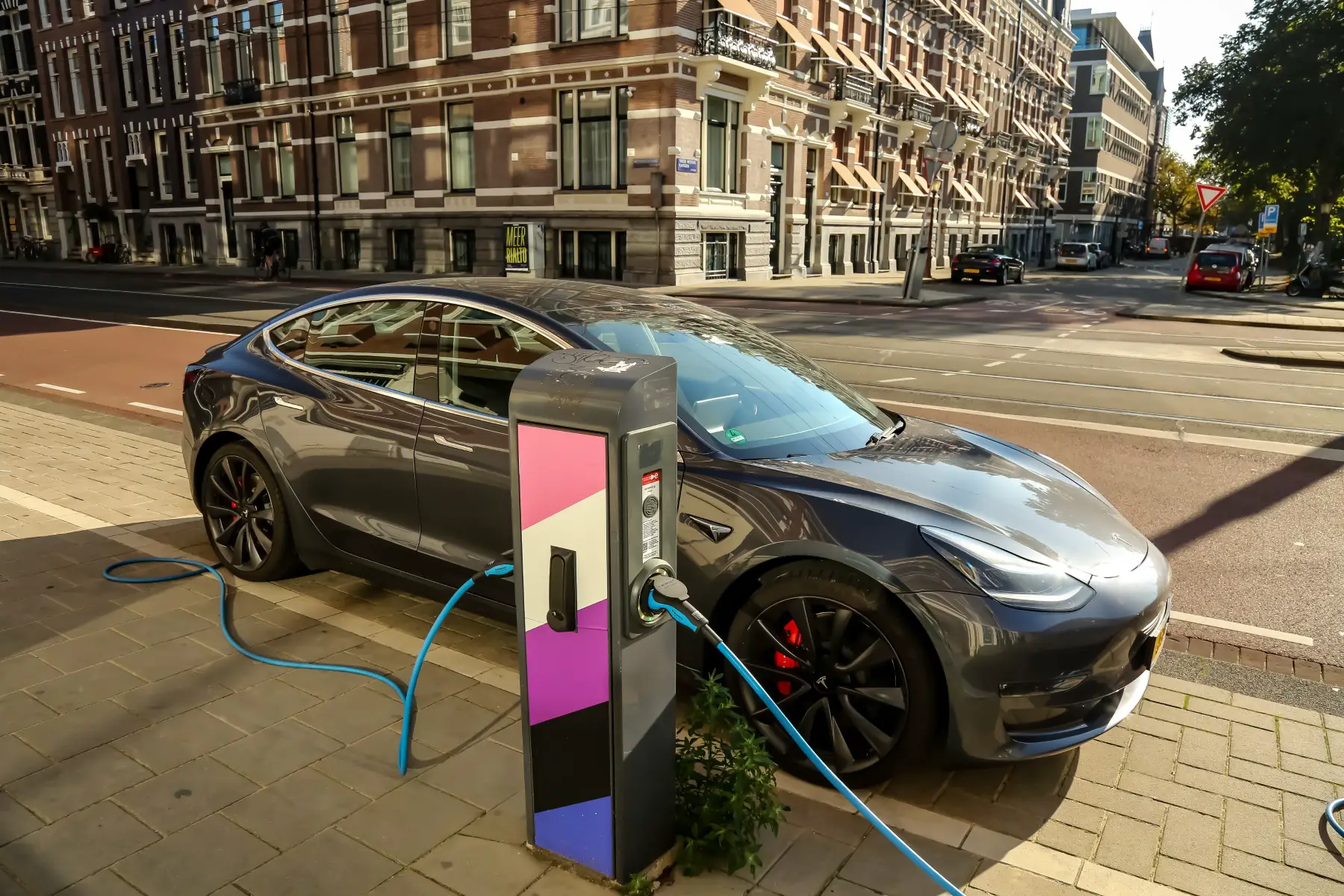
Electric cars are also growing in popularity and are an appealing option for those seeking to live a more sustainable life. Indeed, as of January 2023, there were around 340,583 Plug-in Electric Vehicles (PEVs) on the road. This accounted for around 3.7% of the market.
This growing trend is largely due to the Netherlands’ goal to ensure that all new passenger vehicles comply with zero emissions by 2030. This also means that the country has one of the densest charging networks in the world and is a European leader in electric driving.
The most popular car brand in the Netherlands is Kia. This overtook Volkswagen (VW) as a national favorite in 2022, owing largely to the popularity of its Picanto and Niro models. That said, VW still remains the biggest car supplier in the country, claiming more than 20% of the market. In terms of electric cars, Tesla’s Model 3 was leading the way in January 2023, followed by Kia’s Niro. At this point, there were over 42,600 registered in the country.
Needless to say, when it comes to finding and buying a car in the Netherlands, you certainly won’t be short of options – whatever your budget and preferences.
Who can buy a car in the Netherlands?
You must be at least 18 years old to legally drive in the Netherlands. You must also carry a valid driver’s license (rijbewijs). In addition, you should have third-party liability car insurance (WA-verzekering), a certificate of car ownership (tenaamstellingsbewijs or tenaamstellingscode), and a vehicle registration card (kentekenkaart or kentekenbewijs).
If you are from a European Union (EU) or European Free Trade Association (EFTA) country, you can use your existing license to drive in the Netherlands and don’t need to exchange it. EU licenses issued since January 2013 are valid for 15 years from their issue date. Those issued before then are only valid for 10 years. Similarly, those from Liechtenstein, Norway, and Iceland are valid for up to 10 years or when the license expires (whichever comes first).
If, on the other hand, your license was issued outside the EU or EFTA, you can use it for 185 days after moving to the Netherlands. After this point, you will need to apply for a Dutch driver’s license.
Regardless of where your license was issued, however, you will still need to obey the local laws when it comes to driving in the Netherlands.
Buying a new car in the Netherlands
Naturally, there are several advantages to buying a new car in the Netherlands. For instance, new cars are typically more reliable and do not have the wear and tear of previous owners. They may also come with lower maintenance costs and the opportunity to customize them to your liking.

Moreover, all new cars sold in the country come with a minimum two-year warranty, which can give you extra peace of mind. On the other hand, buying a used car can also have advantages, such as a lower price tag if you are on a tight budget.
How to find cars for sale
Typically, you might begin your search for a car by doing some research online to get an idea of the models and prices on the market. You can then decide if you want to buy one through a dealer or a private seller and whether you want to organize a test drive. It is faily common in the Netherlands to haggle. Therefore, you might want to prepare for this process by looking up how much the car is worth.
Your buyer’s checklist
Once you have found a car you want to purchase and have agreed on the price, customization, and delivery time, you should receive a purchase agreement that includes all of these details.
Of course, it’s also important to check the length of the warranty and what it covers, which will depend on the manufacturer. You may also want to inquire about the delivery time as this can take up to a year in the Netherlands. This is partly due to the fact that the Dutch car market has been struggling with a global chip shortage, which has been hindering the manufacturing of new cars, leading to long delays.
The main regulatory body for road transport in the Netherlands is the Rijksdienst voor het Wegverkeer (RDW). It is responsible for tasks involving the licensing of vehicles, monitoring the condition of vehicles, and issuing vehicle documentation. Therefore, it plays a large role when it comes to buying and selling a car in the country.
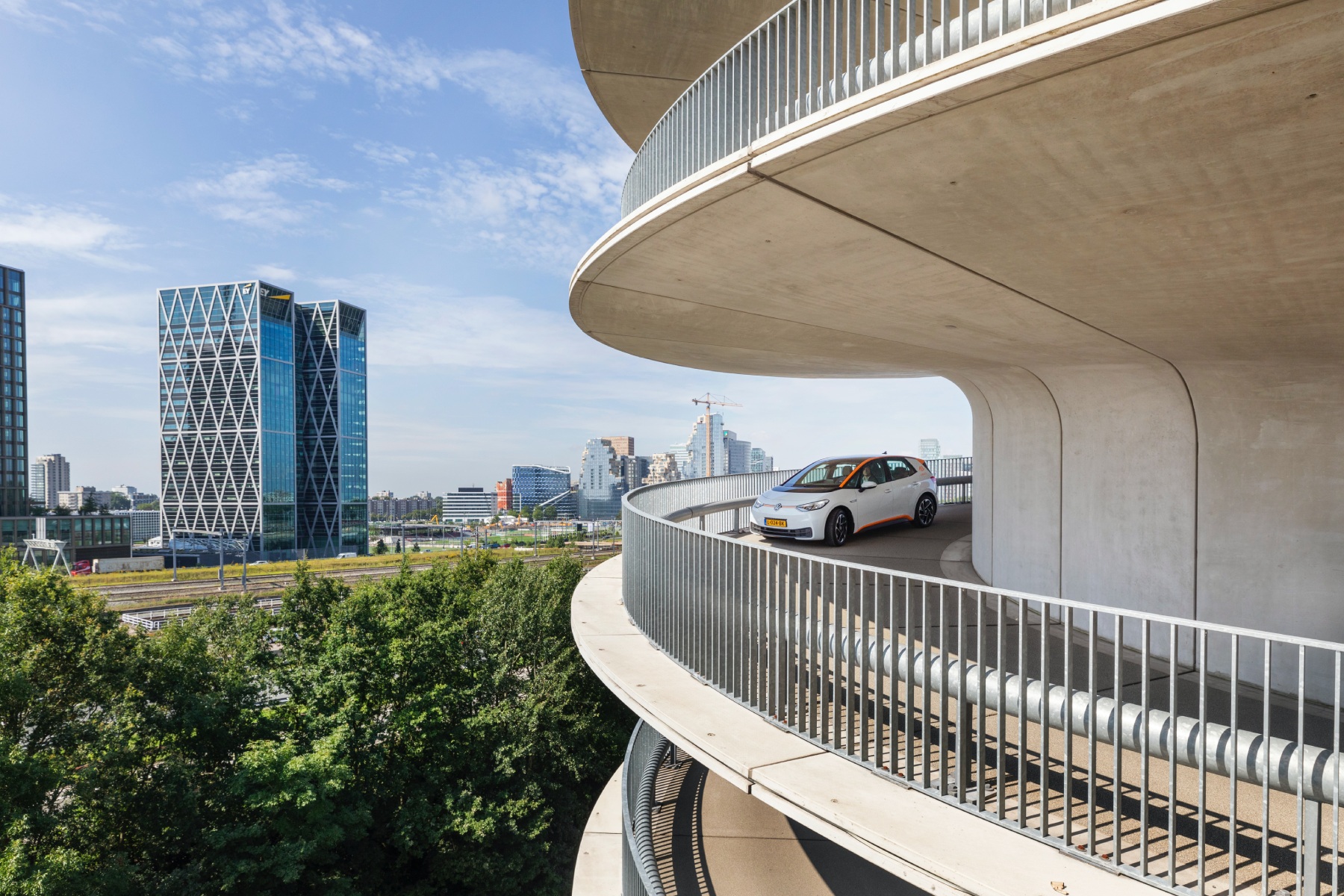
When you buy a new car from an RDW-approved dealership, they will transfer the license plate to your name and provide you with a vehicle registration certificate. You will then receive a registration card and code in the mail within one working day.
The code consists of 9 digits, and if you buy a new vehicle, you will receive of them at once one working day after registration. However, if you buy a used car, you will receive the first 4 digits when you purchase it and the last 5 when you receive the registration card.
Financing a car in the Netherlands
You can pay for a car in full or in installments. If you opt for the latter, there are a number of car dealerships that offer this type of financing. Alternatively, you can go directly to your bank to take out a personal loan. Just make sure you compare the terms and interest rates before making a decision.
Where to buy a new car in the Netherlands
Car dealerships
The biggest car dealerships have locations throughout the Netherlands. You can use RDW’s handy locator tool (in Dutch) to find an RDW-accredited dealership in your area. Simply enter your postcode and select ‘Een voertuig kopen‘ (buying a vehicle).
Dealerships will often advertise their stock online and you can book an appointment to view the car. Some of the most popular dealerships in the Netherlands include:
Buying a car online
In 2021, only 5% of new car sales were made entirely online. However, this is expected to increase in the coming years. Buying online offers the advantage of having all the information available up-front so you can compare it from the comfort of your home before arranging a test drive.

Every retailer has a different return policy. Therefore, it is important to make sure you read the fine print before signing an agreement. The most popular online care sellers in the Netherlands are AutoDealers.nl and auto.nl.
Electric cars and hybrids in the Netherlands
As mentioned, electric cars and hybrids have been steadily growing in popularity in recent years, with charging stations popping up all across the county. They are an increasingly attractive option given that they are exempt from the hefty motor vehicle tax (MRB).
Furthermore, government subsidies have been put in place until 2025 to stimulate the electric market for new or used cars. However, these subsidies are available “as long as stock lasts”, so it’s good to bear this in mind if you are considering applying for one. As mentioned, the most popular Battery Electric Vehicle (BEV) in January 2023 was Tesla’s Model 3, followed by the Kia Niro. Meanwhile, the most popular Plug-in Hybrid Electric Vehicle (PHEV) was the Mitsubishi Outlander, followed by the Volvo V60.
Buying a used car in the Netherlands
Buying a secondhand car comes with several advantages, including affordability and availability. That said, you might want to manage your expectations regarding prices because while the market for new cars is slowly recovering from a global chip shortage, the used car market is still struggling to catch up with demand. As a result of this, prices continue to rise. For instance, in November 2022, the average price of a used car on AutoScout24.nl was €24,772 and was expected to rise even further.
It is also important to remember that used cars come with fewer guarantees and more risks when it comes to dealing with individual sellers via online marketplace platforms. Therefore, it is important to make sure that the vehicle registration card and code match before signing any agreement. You can also use the RDW license plate check to view the car’s history. You should also check the mileage and the date of the car’s last periodic motor vehicle test (or Algemene Periodieke Keuring – APK) to make sure it is up to standards. And finally, you should check the emission class of your vehicle.
After you have checked the car to make sure it is in good condition, you can arrange the transfer of ownership. If you are buying a car from an RDW-approved company, they will do this for you on the spot. Otherwise, the seller can provide you with the necessary documents to arrange this yourself or they can go with you to the RDW desk. Once this is complete, the seller will receive a certificate of indemnification (vrijwaringsbewijs) and hand over the vehicle.
It is advisable to pay for a used car via a bank transfer and not cash as most banks will reimburse you if you have transferred money to someone in the unfortunate event of a scam.
Where to buy a used car in the Netherlands
There are several ways to find and buy a used car in the Netherlands. For instance, you can go directly to a private owner, approach local dealerships, or check online platforms where people post free adverts.
Car dealerships in the Netherlands
Many leading dealerships will have used cars in stock as well as new ones. If you know which model you are after, the best option is to compare the prices you find online and book a test drive in advance.
Again, you can approach the car dealerships detailed above and see what they have in stock. And once you have found a car that fits your needs, don’t be afraid to negotiate with the salesperson. After all, they want the sale – so try to haggle until you are happy with the price.
Car brokers in the Netherlands
Car brokers (autohandelaar) in the Netherlands usually operate within the secondhand market. They tend to be locally based businesses that offer more advantages than buying directly from an individual, such as warranty. You can find a directory of RDW-approved local car brokers by entering your postcode and selecting ‘Een voertuig kopen‘.
Buying a used car online
Many people in the Netherlands search online for the best deals when looking for a used car. Fortunately, there are several websites that advertise secondhand cars across a wide range of dealerships. These include:
Buying a car in the Netherlands from a private owner
Private owners are most likely to sell their used cars on Marktplaats or AutoScout24. While Marktplaats is well known as a platform for private sellers, 80% of cars offered on the platform are actually from professionals offering advantages such as warranty or a trade-in.
It is best to arrange a meeting at the person’s home and ask to see some identification. Then, allow them to show you the car and the way it is operated, making sure that there are no signs of forced entry; i.e. that the car has not been stolen.
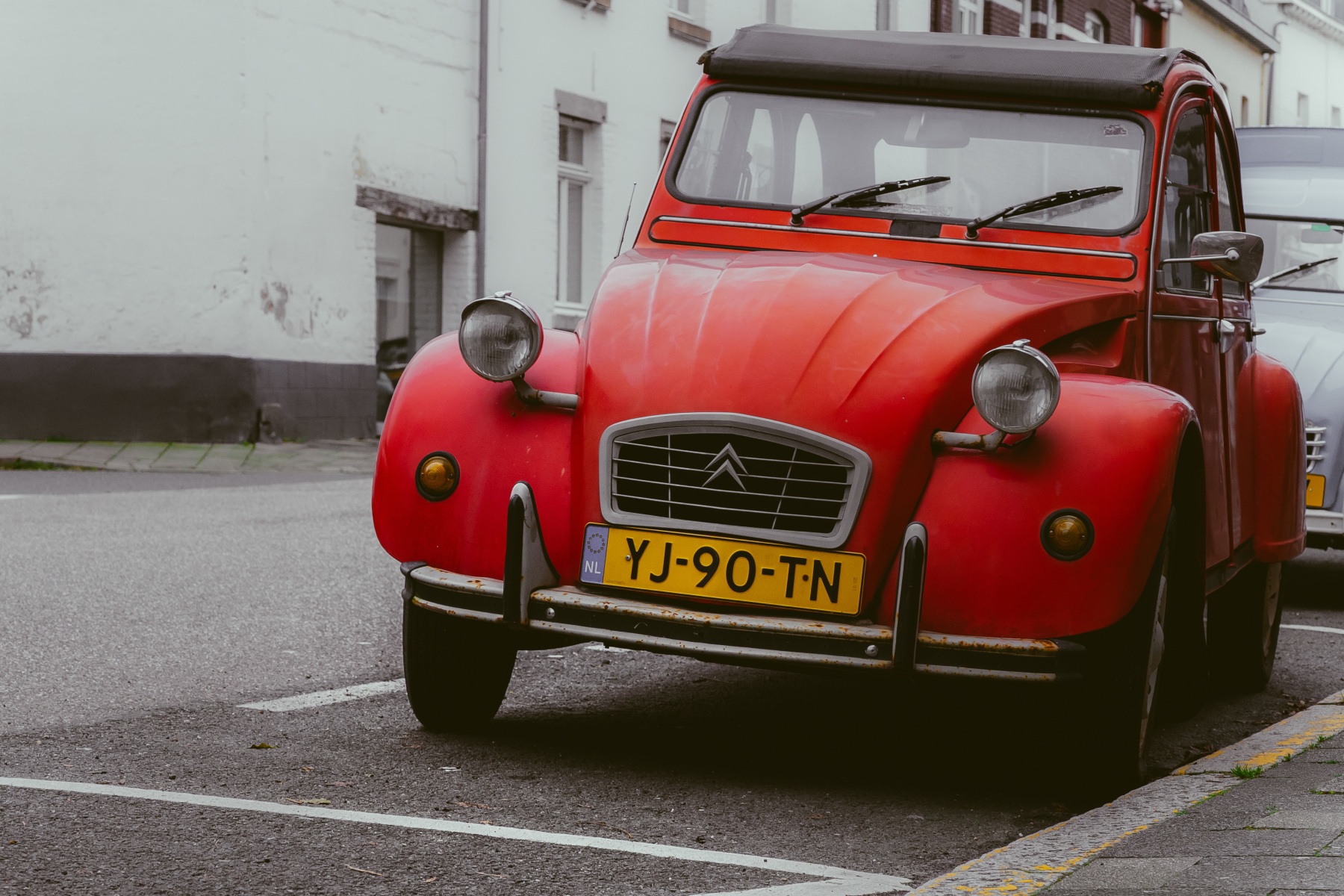
When buying from a private individual, always make sure that you check the license plate and registration certificate, and code. It is their responsibility to provide you with the correct certificates and number plates.
If there is a registration number engraved on the window, check that it matches the documents. You should also ask for the latest periodic motor vehicle test (APK) report which should be done every two years. Once it is time to transfer the car, you can ask them to come with you to the RDW desk or do it online if you have a Dutch driver’s license. And remember, always pay with a bank transfer and never in cash to make sure you are protected against scams.
Car registration and other paperwork
If you buy a car in the Netherlands, you must immediately register it with the RDW for a fee of €11,40. You can do this at an RDW testing station, online, or at an RDW-accredited dealership if this is where you purchased the vehicle.
The following criteria must be met:
- You are at least 18 years of age
- Must reside in the Netherlands, be registered in the Personal Records Database (PRD) of a municipality, and have your BSN
- Must be in possession of the car registration certificate and code
Required documents
You will need to present proof of your ID which can be one of the following:
- A valid Dutch driving license; which is no more than 10 years old
- A valid EU passport or ID card; plus a residence certificate and copy of personal data from the municipal register, which is no more than three months old
- A valid foreign passport; plus a residence certificate and an original extract from the Personal Records Database (BRP) which is no more than three months old
You will also need to show the Vehicle Registration Card (kentekenkaart or kentekenbewijs) and a certificate of car ownership (tenaamstellingsbewijs or tenaamstellingscode).
Once the RWD has verified your identity and registration details, they will transfer the papers into your name, which is typically on the spot. You will then receive a code. Again, if you buy a new vehicle, you will receive all 9 digits at once. Otherwise, you will receive the first 4 digits when you buy a vehicle and the last 5 digits when you receive the registration card in the mail the next working day.
It is important to be aware that from that moment on, you are liable for the vehicle obligations, such as car insurance, motor vehicle test (APK), and motor vehicle tax (MRB).
Registering a car online
Fortunately, the process for registering your car online is very straightforward. You simply need to log in with your DigiD (the central identity management platform in the Netherlands) and complete an ID check by scanning your dutch identity card, passport, or driving license.
You then need to click on ‘Transfer ownership of vehicle’ and enter the car registration code and other details. The fee for this is €11,40 and you can make the payment via iDeal (a widely-used online payment system).
Once the process is complete, you will receive several confirmation emails. You can also download the certificate of indemnification (vrijwaringsbewijs) and send it to the seller.
Car costs in the Netherlands
There are several main costs that you will need to consider when it comes to driving a car in the Netherlands. For example, you will need to arrange mandatory car insurance and pay monthly motor vehicle tax (MRB). You will also need to pay for a periodic motor vehicle test (APK) and any repairs. Then, of course, there are fuel costs. As of February 2023, gasoline in the Netherlands costs around €1.8 per liter.
Motor vehicle tax (MRB)
This is calculated when you register a new vehicle, after which you will automatically receive an assessment from the Dutch Tax and Customs Administration (Belastingdienst). The amount of tax you will need to pay depends on the type of vehicle, its weight, the type of fuel, and its environmental impact. As a result, the amount of road tax you will need to pay can vary as much as €100 per year.
You can use the motor vehicle tax rate tool (in Dutch) to calculate the tax rate. Fully electric cars and hydrogen-powered cars are exempt from paying motor vehicle tax.
Periodic motor vehicle test (APK)
All cars in the Netherlands must undergo a valid periodic motor vehicle test (APK) before they can legally drive on public roads. This guarantees that the car is safe to drive and therefore roadworthy.
The first inspection must be done four years after the car’s registration, then renewed after two years, and then annually. The RDW will remind you when you need to have your car inspected.
The inspection costs between €20 and €75 and can be conducted by any garage or testing station that is approved by the RDW. These are marked by a sign with the text ‘RDW erkend‘ (RDW-approved) and a sticker with the text ‘PTI light vehicles’ (APK lichte voertuigen) or ‘PTI heavy vehicles’ (APK zware voertuigen). You can use the RDW location tool to find the nearest one to you.
If your car fails the inspection, you will need to arrange repair work so that it can be approved once again and you can drive it on the public road.
Car insurance
Car insurance is mandatory for all drivers in the Netherlands. You must have third-party liability car insurance (WA-verzekering), which covers you against any damage or injury caused to others by your vehicle. Other types of optional car insurance include extended liability (WA-beperkt casco) and all-risk (allriskverzekering).
Some of the largest car insurance providers in the Netherlands include:
Car insurance rates vary depending on several factors, including your driving history, experience, and the value of your vehicle. The average car insurance costs around €75 per month. You can compare car insurance quotes using online comparison tools from platforms like Independer and United Consumers.
You can read more about the cost of owning and running a car in our article on Driving in the Netherlands.
Importing a car in the Netherlands
If you are moving to the Netherlands from an EU/EFTA country with your own car, it does come with several advantages. For instance, you don’t have to invest time or money in finding a new one, and you can use it to facilitate your move. You can even benefit from a tax exemption if you meet certain criteria.

Importing a car from outside an EU/EFTA country, on the other hand, can be very costly when you factor in transportation, import duties, VAT, and inspection costs. For instance, import costs are €924,00 and re-inspection costs can be as much as €531,00. Full registration costs then add around an extra €100,00.
The step-by-step process
To import a car into the country, you must be at least 18 years old and registered in the Personal Records Database (BRP). The Dutch government clearly outlines the step-by-step process for importing a car into the Netherlands, which varies depending on whether it is coming from an EU/EFTA country or not.
However, wherever your car is coming from, you must have it inspected by the RDW to ensure that it meets European requirements. If the car passes the assessment, the RDW will register it in the Dutch vehicle registration database. You must pay for the inspection and registration, and the amount you will need to pay depends on where your car is from, the type of car, and the year it was manufactured.
You will also need to submit a BPM return, after which you will receive a new registration certification and code from the RDW. If you have a car registered in your name, you must pay motor vehicle tax (MRB) on a monthly or quarterly basis. You will also need to take out third-party liability insurance (WA-verzekering) to cover you if you cause any damage while driving your car. And finally, you will need to have Dutch registration plates made by a recognized registration plate manufacturer.
Naturally, importing a car into the Netherlands is a lengthy and costly process so it’s important to make sure you plan it well in advance.
Selling a car in the Netherlands
Selling a car through a local car dealer is a quick and easy way to do it. This is because most dealerships that sell used cars will immediately buy one, no questions asked. Many of them also offer the possibility to exchange your old car for a new one. They will also sell the new car to you for a favorable trade-in price. That said, there are several other ways to sell a car in the Netherlands.
Through an RDW-licensed website
Another fast and financially sound way to sell a car in the Netherlands is through an RDW-licensed website such as ikwilvanmijnautoaf.nl, wijkopenautos.nl, or the ANWB. These allow you to enter your car information, determine the current value, and sell it near value.
However, it is important to be aware that these sites vary in services. For instance, some require an inspection, while others don’t. Moreover, some may guarantee a sale, while some may not.
One of the main benefits of using a car-selling site – besides the speed at which you can sell a car – is the lack of required paperwork. The site will arrange all the paperwork regarding the vehicle registration transfer, as well as issue you with a certificate of indemnification (vrijwaringsbewijs), which proves that the car is no longer under your name.
Posting a free advert on an auction site
Another way to sell your car is by posting a free advert on an auction site such as Marktplaats. However, this may be more time-consuming as you have to wait for a good offer to come along. And a good price is not always possible. In fact, you may get no bids or too many bids that fall through.
You must also make yourself available to potential buyers who wish to come and look at the car and test-drive it. Moreover, you are responsible for a proper presentation of the car. Again, you must provide high-quality photographs of your car, write a description, and place them on an auction site.
Although it is not required, having the car inspected – according to the required yearly APK – will build confidence in the buyers. In fact, some buyers will disregard cars that must still go through an APK. This is because it can be a sign of expensive necessary repairs. Doing so, however, may mean that you need to invest in repair work yourself.
Arranging the paperwork
Once you find a buyer and negotiate the price and terms of sale, you will need to print a document that serves as a contract. This should state that the car (including the name brand and model) has been sold for the agreed price.
You will also need to gather the necessary documents in order to transfer the car. These include the vehicle registration card (kentekenkaart) and ownership code (Tenaamstellingscode). If you have lost either of these, you can request them from the RDW.
The RDW outlines the vehicle registration process where ownership of the car is transferred to the buyer. This must be done by the buyer at a kentekenloket (registration desk). This is often located at an RDW office. As the seller, you may also go, but it is not necessary.
If you sell your car to someone outside of the Netherlands, you cannot go to a kentekenloket to transfer ownership of the car. Instead, you and the buyer must go to an RDW office to begin proceedings to export the car. Of course, this requires more paperwork.
Equipment your car needs to have in the Netherlands
While driving in the Netherlands, you must always carry your driver’s license, vehicle registration card, and vehicle insurance document with you.
There are no mandatory safety objects that you must keep in your car, such as a first-aid kit or a fire extinguisher. The use of a warning triangle is only mandatory if your warning lights don’t work.
Having said that, it is advisable to have the following with you:
- Red warning triangle
- Reflective safety vest
- Spare bulb
- First aid kit
